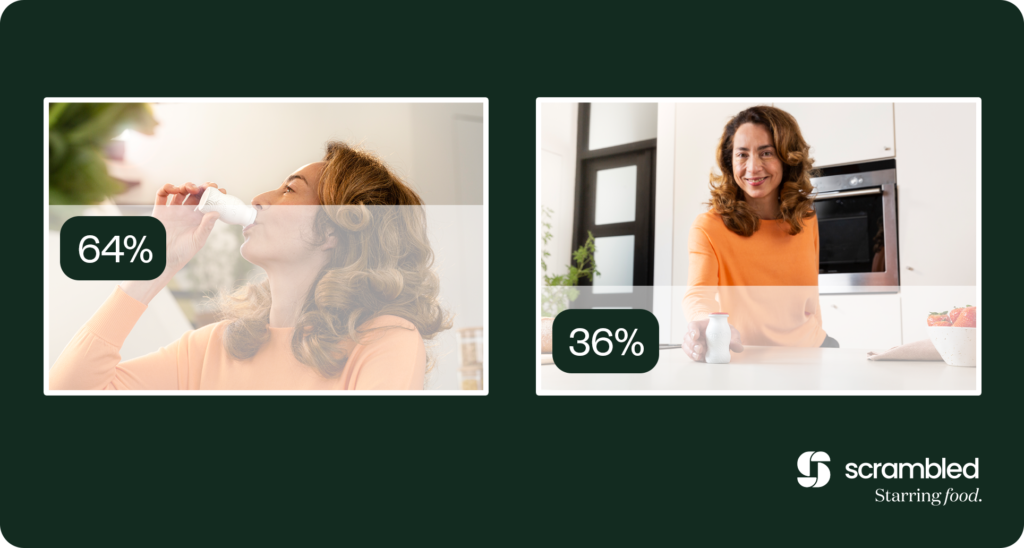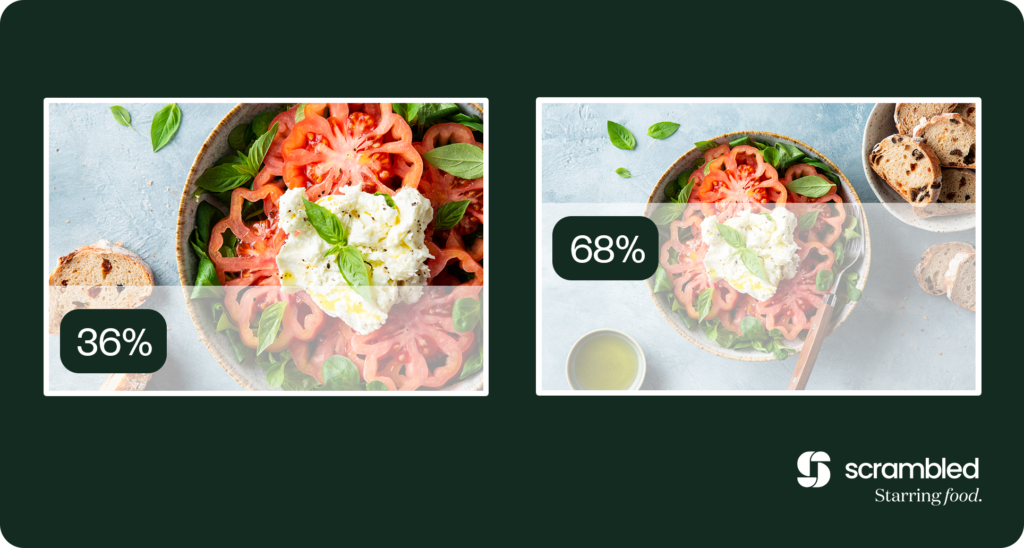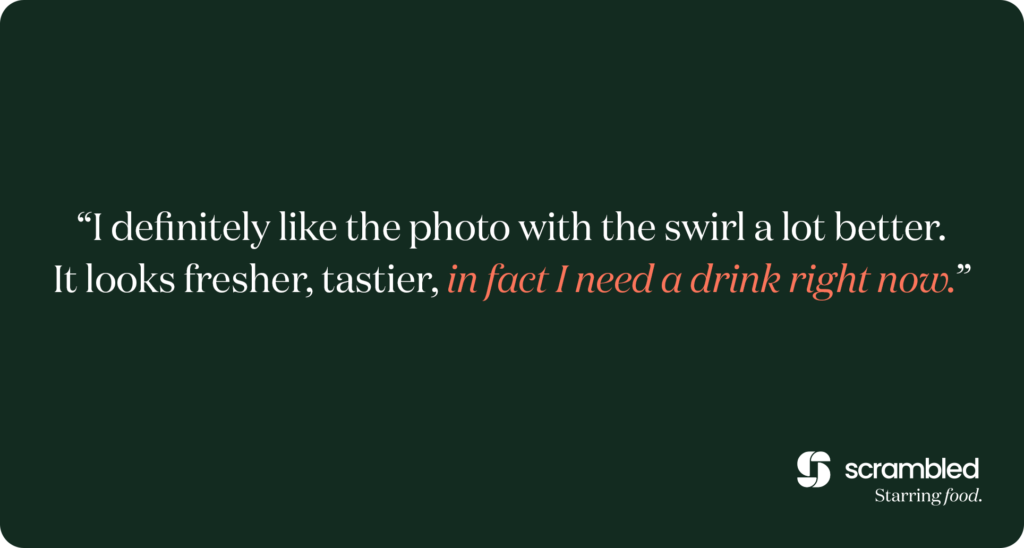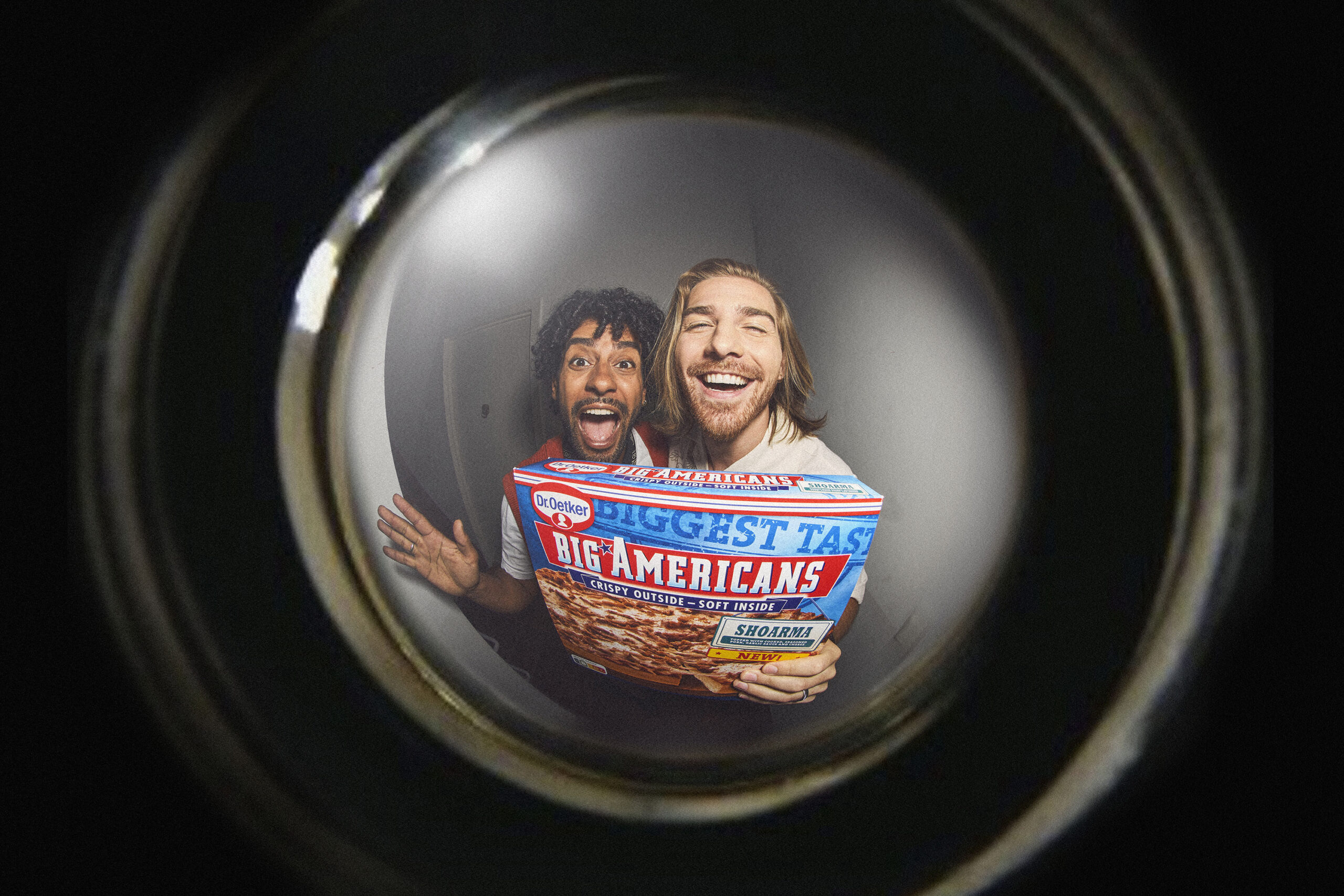Content is (still) king!
Back in 1996, when Bill Gates wrote his essay titled “Content is King” he was oh so right. And today this claim is more relevant than ever. With consumers averaging almost 3 hours a day online, you better make your sure your content is standing out. At Scrambled, when producing relevant content for brands, we rely on two pillars: our (food) expertise and data. Most of the marketeers we work for focus on post-campaign metrics such as reach, engagement, conversion and what have you. And they’re right. Something we see that is less thought about is how data can help with the creation of content itself. And that’s where we come in!
Broadly speaking, we can distinguish four phases in our content production process. Here are some examples of how we make content more relevant so it’s being noticed by our clients’ consumers. Let’s go!
1. Concepting
Everything starts with a great concept. Based on a client briefing we let our creative minds do their magic, and then test it, and again, and again…until we nailed it. Example: When thinking about a concept for a yoghurt drink we were curious about what would work best for their key visual, supporting the launch of that new product. Option A, having someone reaching for the bottle in a kitchen setting or option B seeing that same person actually drinking the product, in the same setting. So we’ve presented the two concepts to a test-audience and 64% (quantitative data) of the respondents preferred the drinking one. And while at it we also asked what made the one better than the other, resulting in tons of interesting facts (qualitative data).

2. Pre-production
After a concept has been approved we’re going into the next phase, pre-production. This is where all the preparation and planning takes place; production at its best! Which backdrop works best for a certain audience? Get data. What platform to use which type of content on? Get data. What kind of angle do we want to use? Get data. Do we want to associate a male or female model with the product? Get data. You got it, right?

3. Production
So everything is prepared, the crew is ready, let’s get to work. Usually in this phase we know what to do and how to do it, sometimes we have some doubts though. Like recently when we were shooting photography for a beer brand. We wanted a swirl of beer to surround the bottle and were quite generous while doing. The studio smelled like an old bar and we weren’t sure what photo worked best. So what we did? Right we tested it and went on. The same by the way for the question should we shoot the bottle with lid on or off. Get data and move on, while in production. 71% btw went for the right one. Comments like “looks fresher”, “I’m getting thirsty of this image”, and “you could consider to use a bit less of beer, the bottle is almost drowning” helped to steer the production.

4. Post-Production
And so we continue, the photo shoot is done, the visual is edited and now we need to add copy. Many options there. Of course, we have the brand guide, font guide and all the guides we need but are we going to add the promo copy top right, left bottom. BIG or small. Let the photo speak for itself and use little copy, or make it screaming and a lot? You probably got it, we test is and make our choices data-driven.
Data-driven CONTENT development IS KING
We hope that with these practical examples you got an idea of how we can work incorporating data in our production cycle. We’ve mastered it and it’s in our dna. Don’t guess, get proof and by doing so we make your content perform better than your competitors’. If you want to learn more about our approach we are happy to share some more insights and examples.

